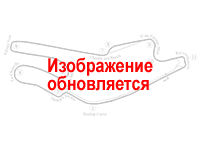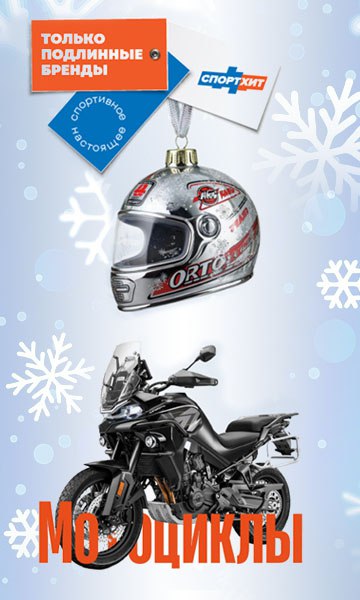
Ricardo Tormo

Длина кольца: 4005 метров (2.489 мили)
Ширина трека: 12 метров
Самая длинная прямая: 876 метров (0.544 мили)
Левых поворотов: 9
Правых поворотов: 5
Часовой пояс: МСК -2
Предоставлено Gismeteo.Ru
Погода на треке
21/12
ДЕНЬ
+11 +13CДЕНЬ

Ветер: Ю-З, 2 м/с
Отн. влажность: 51-53%
Атм. давление: 750-752 мрс
21/12
ВЕЧЕР
+9 +11CВЕЧЕР

Ветер: Ю-З, 1 м/с
Отн. влажность: 58-60%
Атм. давление: 751-753 мрс
22/12
НОЧЬ
+7 +9CНОЧЬ

Ветер: Ю-З, 2 м/с
Отн. влажность: 54-56%
Атм. давление: 751-753 мрс
22/12
УТРО
+7 +9CУТРО

Ветер: Ю-З, 2 м/с
Отн. влажность: 54-56%
Атм. давление: 752-754 мрс
Описание, история и факты.
The Ricardo Tormo circuit was only completed in 1999 and is named after the former 50 cc World Champion Spaniard Ricardo Tormo, who died of leukaemia. The grand prix at the track attracts huge crowds who create a truly amazing atmosphere packed into the grandstands that surround the tight 4.005m circuit which is situated 10km from Valencia airport. Valencia is also the firework capital of Europe and the controlled explosions to celebrate the end of races just add to the party atmosphere at this last grand prix of the season.
The track, despite a comparatively long main straight, is the second shortest and second slowest on the MotoGP calendar. There are five right hand corners and nine lefts and its a favourite testing track for Formula One cars especially before racing in Monaco.
To make a good race here it is necessary to prepare the bike so that it is light and agile. The corners come one after another all around the lap and a manoeuvrable bike is key to setting good lap times. In general one can say this is a track where a shorter wheel base is desirable and often special plates are fitted to make the bike turn more easily into the corners. This setting can though lead to problems in turn one, turn seven and the final corner where the rider must brake when the bike is leaning, which tends to block the steering and the fitting of these special plates can accentuate the problem. Also in the final corner the rider must change from fourth gear to first with the bike leaning over on the side where the gear change is located, making it very difficult to find a good racing line through the corner.
Although Cheste is not a high speed circuit, the braking points are nevertheless sharp and hard suspension shocks are normally fitted. The most movement in the front fork is experienced on the short straight leading up to turn 2, and also the tricky corner 12 where the track suddenly starts to climb, producing even more force on the front shocks. Luckily the track is in good conditions and there are not too many bumps so hard springs can be fitted without too much pondering.
Rear suspension is not an excessive problem either, although we must bear in mind that the rear tends to sink under acceleration when the throttle is opened at low speeds, and also when the rider accelerates through the long corner with the bike leaning over. To counteract this effect harder springs can be fitted or the hydraulic brakes of the rear shock can be adjusted to dampen the compression and sinking effect in these areas.
Another important factor to consider when setting the bike is the engine brake. A well-adjusted engine brake that lets the rider turn with ease is invaluable in setting fast times here.
In Cheste, all the gears are used around the lap, with three taken in first gear, seven in second gear, three more in third and finally turn 13 is taken in fourth. And we could really say that turn 7 is taken in fifth gear although under braking in preparation for turn 8. Since the top speed on the straight is not so high, it is relatively easy therefore to find a good adjustment for the gear ratios.
Tyre choice is not such a big problem in Cheste as it is not a circuit that causes excessive tyre wear. The only thing to look out for is the left side of the tyre since there are many more left corners than right corners, and also the possible heavy tyre wear produced in turn 13.
Как добраться до трассы.
Трасса находится в черте Валенсии.
Легко попасть из аэропорта и из центра города по шоссе A3, движение в сторону Мадрида, выход с шоссе на 334 км, прямо рядом с трассой расположена сервисная станция и мотель. Далее - подъезд к центральному входу на трассу.
Контактная информация.
Официальный web-сайт: www.circuitvalencia.com/
Circuit de la Communitat
Valenciana Ricardo Tormo,
Autovia A3 Madrid Valencia,
Salida 334 Cheste,
Apartado de correo 101
46380 Cheste, Valencia
Spain
Tel +34 96 252 5220
Fax + 34 96 252 5224



